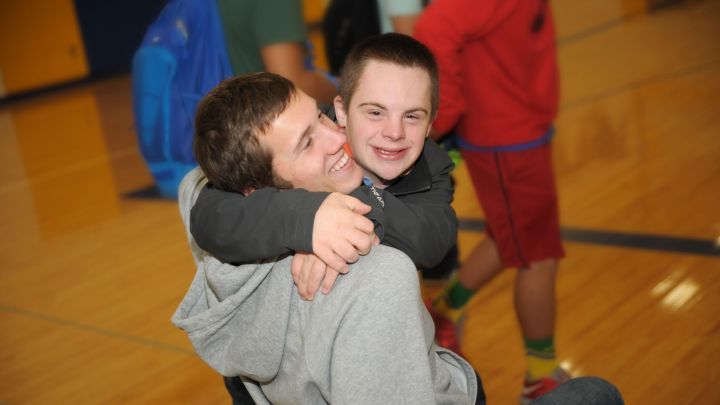Understanding Neurodiversity and Its Impact on Disability Perceptions
An understanding of Neurodiversity has the potential to shift our perceptions of disability. Before being coined in the late 1990s, differences in the way brains developed and functioned were referred to generally as neurological differences. These differences implied uniquely occurring events that were often associated with disabilities. Neurological differences were generally considered to be examples of development gone wrong rather than differences that frequently occur as part of typical variations in development across all people.
The idea of Neurodiversity arose from a recognition that differences exist among all people and, in fact, are more typical than unusual, and they vary in intensity.
If one looks across all areas and stages of life, differences are found throughout human existence. Sometimes, differences are neurological/cognitive, sometimes they are physical, while in other instances, they are psychological. Sometimes, the differences are minor, and sometimes, the differences are pronounced. When differences are pronounced and they limit the ability of the individual to adapt to the conventions of society, they might be called disabilities. Disabilities suggest that the differences experienced by the individual impede the person's ability to function independently according to society’s expectations and rules.
Reframing Disability
Proponents of Neurodiversity argue that differences are part of all of life, that differences are the rule rather than the exception, and that differences should be seen as existing on a continuum.
Every person represents a wonderful mixture of mental/cognitive, physical, and psychological strengths and weaknesses. No one is strong in all aspects of life and no one is completely characterized by weakness. We each live with a unique package of things we do well and things we do not do well. In this context, differences are understood as naturally occurring characteristics of all people.
Over time, society constructs expectations for abilities and skills that are important, and the expectations change over time. At one time, one needed to know how to grow crops and care for livestock. One's life depended upon skill in those areas. Today, in the U.S., this knowledge is important in the hands of a smaller group of people. Now, one must know how to use words and manage technology. Future generations will encounter different demands. Abilities and skills that are viewed as necessary today will likely be less important in the future. A person’s package of strengths and weaknesses will be valued differently as demands of the time change.
Neurodiversity suggests that the differences we see among persons today might better be thought of as unique differences that equip individuals in varying degrees rather than as disabilities that define a person. Disabilities we identify today might not be significant in another time or another context. For example, because many societies rely heavily on reading and writing to work or conduct commerce, reading has become an essential ability and skill. Two hundred years ago, reading and writing were not as necessary in so-called developed countries and cultures. Of course, reading and writing opened up the world of intellectual growth and exchange to people who can read and write, but two hundred years ago, reading was not the critical medium it is today. Interestingly, with the advent of smart technology, we can access information and ideas even if we cannot read or write. Some argue today that reading is less important to a successful life than it was thirty years ago.
Disabilities as Differences
Rather than use the language of disability to describe differences, Neurodiversity suggests that we understand disability as naturally occurring differences that occur on a continuum.
Seeing disabilities as differences opens us to the potential to see the inherent gifts in every person. Disabilities are not the primary characteristic of an individual. Instead, they are differences that characterize one aspect of a person, while a person has other factors that complement the differences. A person is not defined by differences but by their pattern of strengths and weaknesses.
One argument against Neurodiversity is that it causes us to minimize the impact of differences for some. We might neglect the need to support an individual who finds it difficult or impossible to meet society's demands. We might conclude that a difference is a simple issue that is not a big deal.
Proponents of Neurodiversity recognize that, in many cases, differences make the fit between the individual and society's expectations significantly challenging. Differences associated with autism spectrum disorder (ASD) can make it very difficult for a person to engage effectively with society, at times leading to isolation. On the other hand, recognizing that the label of ASD does not define an individual opens us to consider the person's strengths, which are often ignored in the face of the labeled disability. Surely, life can be very difficult for many who live with differences associated with a labeled disability. Life can be better, however, when we recognize all people as gifted, albeit in unique ways, and that some live with uniquely challenging differences.
Join our Neurodiversity Book Study
This fall, I'll lead an online book study on the topic of Neurodiversity. From September 15 through December 7, we'll read and discuss Thomas Armstrong's book, Neurodiversity: Discovering the Extraordinary Gifts of Autism, ADHD, Dyslexia, and Other Brain Differences. In this book, Armstrong explores the origin of the idea of Neurodiversity, and he applies the concept to numerous well-known disabilities, such as ASD, ADD/ADHD, and Schizophrenia. His intent is not to do away with the idea of disability but to offer a different way to think about how each of us is created uniquely, yet like one another.
Educators, parents, and caregivers can join us for this important online discussion. Through readings and discussions, we will explore the concept of Neurodiversity and its application to our schools and classrooms.
NOTE: All Belong does not endorse Neurodiversity, however, we encourage you to use it as one tool or perspective to consider in your understanding of disability.

Phil Stegink
Teacher Consultant, Special Projects
Phil Stegink works on special projects for All Belong and is an assistant professor of special education at Calvin College.
